The Intel 6th Gen Skylake Review: Core i7-6700K and i5-6600K Tested
by Ian Cutress on August 5, 2015 8:00 AM ESTWhat You Can Buy: Linux Performance
Built around several freely available benchmarks for Linux, Linux-Bench is a project spearheaded by Patrick at ServeTheHome to streamline about a dozen of these tests in a single neat package run via a set of three commands using an Ubuntu 11.04 LiveCD. These tests include fluid dynamics used by NASA, ray-tracing, OpenSSL, molecular modeling, and a scalable data structure server for web deployments. We run Linux-Bench and have chosen to report a select few of the tests that rely on CPU and DRAM speed.
C-Ray: link
C-Ray is a simple ray-tracing program that focuses almost exclusively on processor performance rather than DRAM access. The test in Linux-Bench renders a heavy complex scene offering a large scalable scenario.
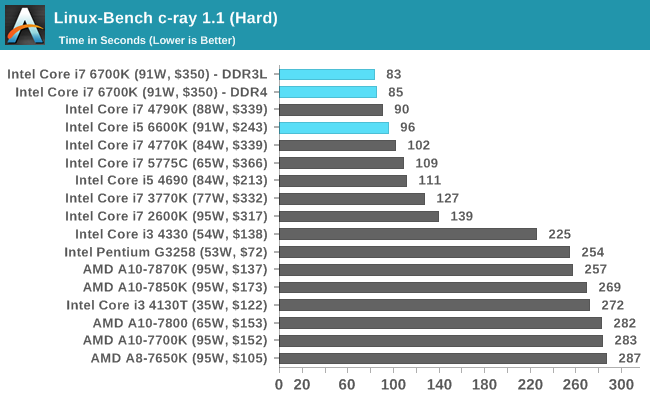
NAMD, Scalable Molecular Dynamics: link
Developed by the Theoretical and Computational Biophysics Group at the University of Illinois at Urbana-Champaign, NAMD is a set of parallel molecular dynamics codes for extreme parallelization up to and beyond 200,000 cores. The reference paper detailing NAMD has over 4000 citations, and our testing runs a small simulation where the calculation steps per unit time is the output vector.
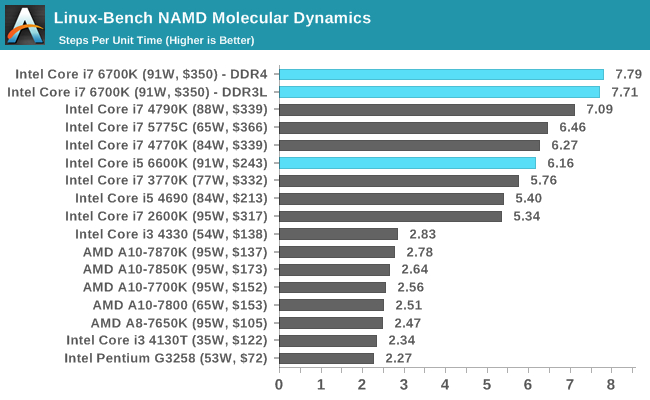
NPB, Fluid Dynamics: link
Aside from LINPACK, there are many other ways to benchmark supercomputers in terms of how effective they are for various types of mathematical processes. The NAS Parallel Benchmarks (NPB) are a set of small programs originally designed for NASA to test their supercomputers in terms of fluid dynamics simulations, useful for airflow reactions and design.
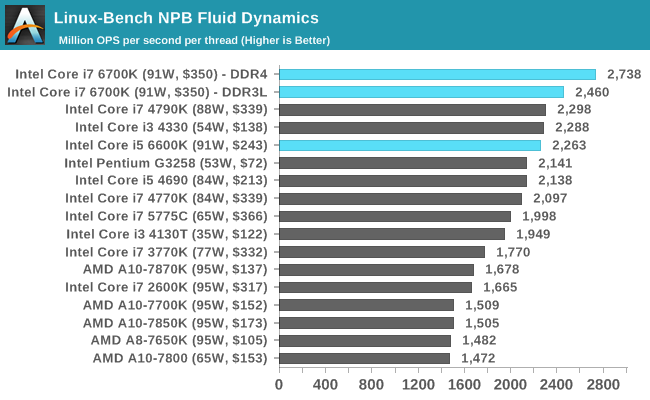
Redis: link
Many of the online applications rely on key-value caches and data structure servers to operate. Redis is an open-source, scalable web technology with a b developer base, but also relies heavily on memory bandwidth as well as CPU performance.
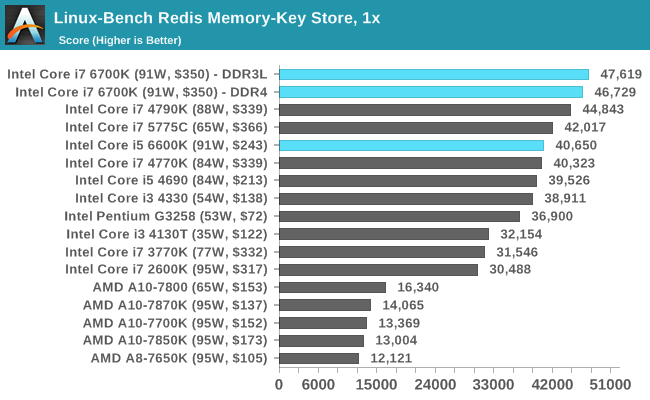
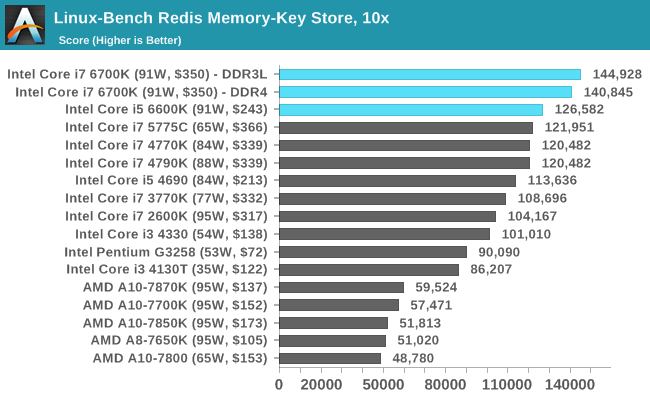
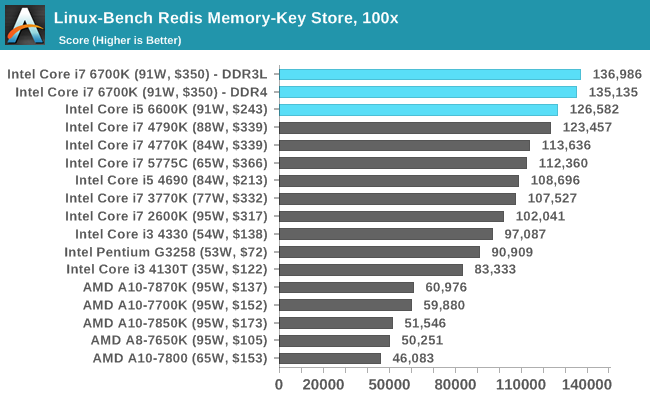










477 Comments
View All Comments
jwcalla - Wednesday, August 5, 2015 - link
I kind of agree. I think I'm done with paying for a GPU I'm never going to use.jardows2 - Wednesday, August 5, 2015 - link
If you don't overclock, buy a Xeon E3. i7 performance at i5 price, without integrated GPU.freeskier93 - Wednesday, August 5, 2015 - link
Except the GPU is still there, it's just disabled. So yes, the E3 is a great CPU for the price (I have one) but you're still paying for the GPU because the silicon is still there, you're just not paying as much.MrSpadge - Wednesday, August 5, 2015 - link
Dude, an Intel CPU does not get cheaper if it's cheaper to produce. Their prices are only weakly linked to the production costs.AnnonymousCoward - Saturday, August 8, 2015 - link
That is such a good point. The iGPU might cost Intel something like $1.Vlad_Da_Great - Wednesday, August 5, 2015 - link
Haha, nobody cares abot you @jjj. Integrating GPU with CPU saves money not to mention space and energy. Instead of paying $200 for the CPU and buy dGPU for another 200-300, you get them both on the same die. OEM's love that. If you dont want to use them just disable the GPU and buy 200W from AMD/NVDA. And it appears now the System memory will come on the CPU silicon as well. INTC wants to exterminate everything, even the cockroaches in your crib.Flunk - Wednesday, August 5, 2015 - link
Your generational tests look like they could have come from different chips in the same series. Intel isn't giving us much reason to want to upgrade. They could have at least put out a 8-core consumer chip. It isn't even that much more die space to do so.BrokenCrayons - Wednesday, August 5, 2015 - link
With Skylake's Camera Pipeline, I should be able to apply a sepia filter to my selfies faster than ever before while saving precious electricity that will let me purchase a little more black eyeliner and those skull print leg warmers I've always wanted. Of course, if it doesn't, I'm going to be really upset with them and refuse to run anything more modern than a 1Giga-Pro VIA C3 at 650 MHz because it's the only CPU on the market that is gothic enough pending the lack of much needed sepia support in Skylake.name99 - Wednesday, August 5, 2015 - link
And BrokenCrayons wins the Daredevil award for most substantial of lack vision regarding how computers can be used in the future.For augmented reality to become a thing we need to, you know, actually be able to AUGMENT the image coming in through the camera...
Today on the desktop (where it can be used to prototype algorithms, and for Surface type devices). Tomorrow in Atom, and (Intel hopes), giving them some sort of edge over ARM (though good luck with that --- I expect by the time this actually hits Atom, every major ARM vendor will have something comparable but superior).
Beyond things like AR, Apple TODAY uses CoreImage in a variety of places to handle their UI (eg the Blur and Vibrancy effects in Yosemite). I expect they will be very happy to use new GPU extensions that do this with lower power, and that same lower power will extend to all users of the CI APIs.
Without knowing EXACTLY what Camera Pipeline is providing, we're in no position to judge.
BrokenCrayons - Friday, August 7, 2015 - link
I was joking.